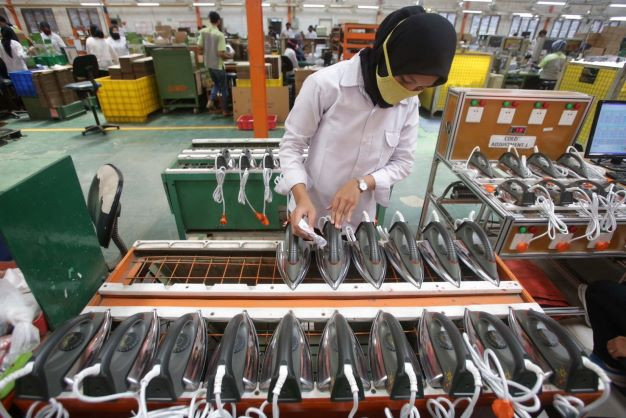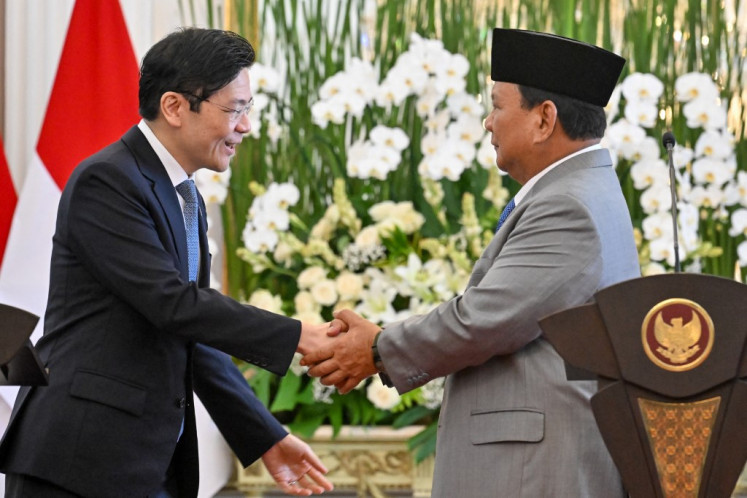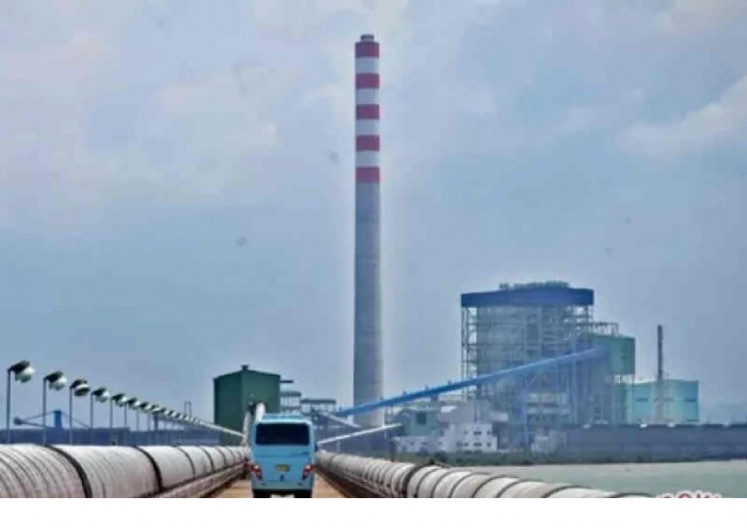Indonesia’s manufacturing PMI at eight-month high
Manufacturing purchasing managers across Indonesia are confident about business prospects thanks to increasing orders.
Change text size
Gift Premium Articles
to Anyone

I
ndonesian factories are in good shape as a key forward-looking indicator has reached the highest level in eight months thanks to strong order books.
According to London-based data firm IHS Markit, part of S&P Global, Indonesia’s manufacturing purchasing managers’ index (PMI) rose to 53.7 in September.
Up 2 points from August, that is the highest reading since January for the index, which measures factory activity based on a survey of 400 firms.
“Latest survey data was consistent with the strongest improvement in the health of Indonesia’s manufacturing sector since January,” S&P Global economist Laura Denman said in a press statement on Monday.
Indonesia’s manufacturing PMI has been on a steady upward trend since a low point in May, when it tanked to 50.8 points, though still signifying an expansion in activity by remaining above the threshold of 50 points.
Indonesia’s performance was slightly above the ASEAN headline PMI of 53.5 points and the second-best among emerging economies of the region, trailing only behind Thailand’s 55.7 points.
The Philippines and Vietnam followed Indonesia with 52.9 points and 52.5 points, respectively, while Malaysia’s manufacturing PMI fell into contraction territory with a reading of 49.1 points, down from 50.3 points in August and the lowest figure this year.
Read also: Inflation bites harder as Indonesia braces for ballooning transportation costs
Denman pointed out that a more robust environment for demand had led to the highest new orders for industries, which in turn led to an expansion of production and job creation.
A worsening global economic environment saw export demand slow down for a fourth consecutive month, but at the same time, the reduced inflationary pressure helped firms by pushing input-cost growth to a 20-month low.
Business confidence in the economy, however, was below the historical average.
“While some firms remained optimistic that current demand trends would be sustained, others expressed concerns regarding the overall effects that inflation will have on the wider economy,” Denman continued.
Read also: Indonesia’s manufacturing PMI rises to 51.7 in August
In response to the latest manufacturing PMI readings, Coordinating Economic Minister Airlangga Hartarto said average manufacturing utilization had increased since August, which included expansion in the motor-vehicle industry and the food-processing industry.
Although noting the possibility of a further decrease in overseas demand, the government appears confident that rising domestic demand can fill the gap.
“The expansion reflects a consistent recovery in the manufacturing industry, at least in the last few months, and a domestic economic recovery after the [COVID-19] pandemic,” Airlangga said on Monday.
Industry Minister Agus Gumiwang said that a production increase in September was visible in the electronics industry, which had seen significant laptop production due to government procurement, and in the non-metal mineral industry, with huge demand for cement, ceramics and glass due to public infrastructure and private-property construction.
In response to the lower export demand for manufactured goods, he said, the drop-in orders came from major trading partners, such as China, with continued COVID-19 related lockdowns, as well as the United States and Europe, with ongoing high inflation.
Although significant export reductions had been reported, overseas demand for crude palm oil had returned to normal levels after the recent export ban, he continued.
“Production activity played a key role in the higher readings in the index, which are supported by high domestic demand,” Agus said on Monday.
Center of Economic and Law Studies (CELIOS) director Bhima Yudhistira noted that seasonal factors affected manufacturing PMI readings, as seen in September last year, when the figure jumped to 53.7 points from 43.7 points in August.
Manufacturers were preparing for rising sales in November and December, ahead of Christmas and New Year’s Eve, he explained.
However, he warned about the impact of rising raw materials prices in the electronics and apparel industries, where the rupiah’s depreciation against the US dollar could add to imported inflation.
Further interest rate hikes by the central bank, meanwhile, could increase the cost of financing for industry, while also possibly reducing credit-funding consumer spending by middle-income earners already struggling with the recent fuel price hike.
This would impact spending on nonessential goods, raising questions about whether the domestic economy could fully plug the gap caused by lower export demand.
"The manufacturing industry has benefitted from relaxed pandemic restrictions, as upper-middle-class spending rose significantly. But with the threat of inflation and a possible global recession, it will be a challenge for the manufacturing industry to maintain a high PMI in the next few months," Bhima told The Jakarta Post on Tuesday.









